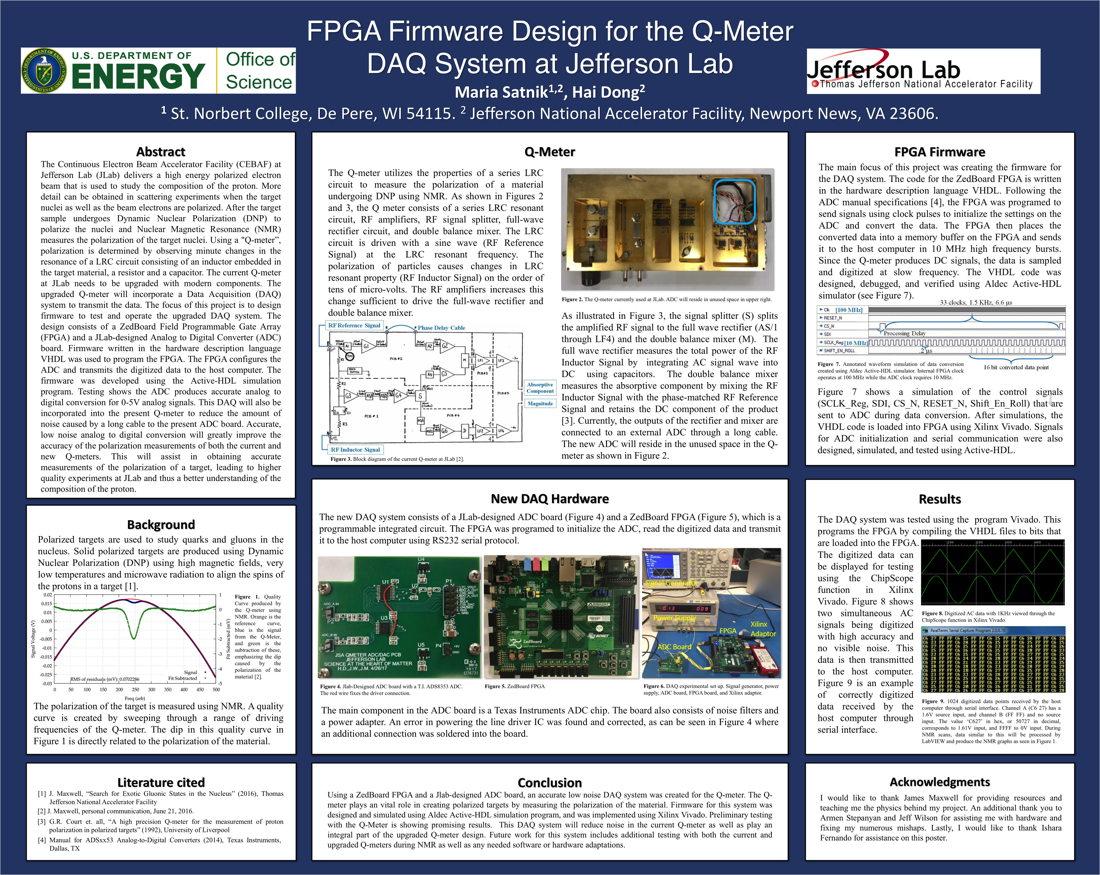Undergraduate Research at Jefferson Lab
FPGA Firmware Design for Q-Meter DAQ System at Jefferson Lab
Student: Maria Satnik
School: St. Norbert College
Mentored By: Hai Dong
The Continuous Electron Beam Accelerator Facility (CEBAF) at Jefferson Lab (JLab) delivers a high energy polarized electron beam that is used to study the composition of the proton. More detail can be obtained in scattering experiments when the target nuclei as well as the beam electrons are polarized. After the target sample undergoes Dynamic Nuclear Polarization to polarize the nuclei, Nuclear Magnetic Resonance (NMR) measures the polarization of the target nuclei. Using a "Q-meter", polarization is determined by observing minute changes in the resonance of a LRC circuit consisting of an inductor, resistor and capacitor, where the inductor is embedded in the target material. The current Q-meter at JLab needs to be upgraded with modern components. The upgraded Q-meter will incorporate a Data Acquisition (DAQ) system to transmit the data. The focus of this project is to design firmware to test and operate the upgraded DAQ system. The design consists of a ZedBoard Field Programmable Gate Array (FPGA) and a JLab-designed Analog to Digital Converter (ADC) board. Firmware written in the hardware description language VHDL was used to program the FPGA. The FPGA configures the ADC and transmits the digitized data to the host computer. The firmware was developed using the Active-HDL simulation program. Testing shows the ADC produces accurate analog to digital conversion for 0-5V analog signals. This DAQ will also be incorporated into the present Q-meter to reduce the amount of noise caused by a long cable to the present ADC board. Accurate, low noise analog to digital conversion will greatly improve the accuracy of the polarization measurements of both the current and new Q-meters. This will assist in obtaining accurate measurements of the polarization of a target, leading to higher quality experiments at JLab and thus a better understanding of the composition of the proton.

Citation and linking information
For questions about this page, please contact Education Web Administrator.
